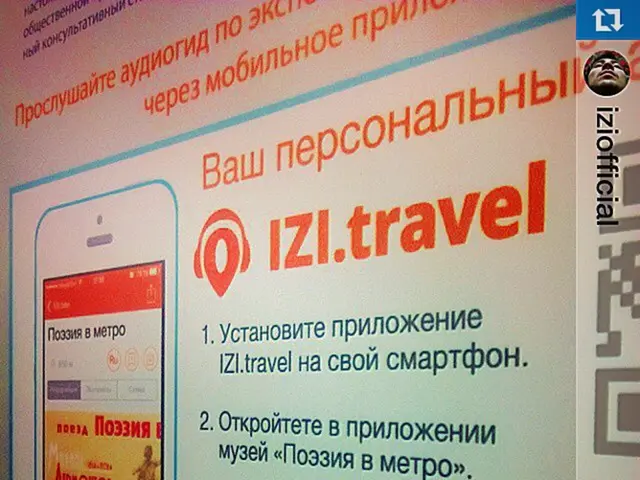Guide for Incorporating Agile Methodology into Your Non-Technical Team
Agile project management is no longer confined to the realm of IT and development teams. In fact, adopting Agile practices can bring significant benefits to various sectors, such as marketing, sales, customer support, legal firms, food and beverage industries, and field services.
Embracing Agile in Non-IT Contexts
To implement Agile project management effectively in non-IT teams, it's crucial to adapt Agile frameworks, like Scrum, Lean, and Kanban, to align with each team's specific workflows while fostering collaboration, flexibility, and continuous iteration.
Key Steps and Best Practices
- Tailor Agile frameworks to the team’s needs: Scrum, Lean, and Kanban are popular choices that help non-IT teams visualize work, iterate rapidly, and respond to changing priorities effectively.
- Shift the team mindset and culture: Agile requires psychological safety, trust, openness, and a willingness to embrace change. Team members must buy into Agile principles and be encouraged to communicate openly and collaborate towards shared goals.
- Start with manageable projects or pilots: Especially for teams new to Agile, begin with small-scale initiatives or micro-projects. This allows teams to learn and adjust Agile practices without high risk.
- Implement iterative work cycles and regular reviews: Use Sprints or Kanban boards to break down work into smaller pieces. Hold frequent stand-ups, reviews, and retrospectives to assess progress, gather feedback, and improve processes continuously.
- Define clear Agile roles and responsibilities: Assign product owners or project champions who drive the Agile process forward, facilitate decision-making, and maintain alignment with business objectives. For complex projects, consider adding more specialized roles.
- Leverage collaboration tools and communication practices: Non-IT teams often benefit from visual task boards, real-time updates, and transparent documentation to keep all members aligned, especially if remote work is involved.
- Encourage innovation and adaptability: Agile supports rapid innovation cycles by encouraging experimentation, learning from failures, and quickly pivoting as customer needs or market conditions evolve.
- Provide training and support: Formal training for key team members in chosen Agile methodologies helps teams follow practices effectively before tailoring them to their context.
- Monitor and refine Agile adoption: Track challenges, successes, and bottlenecks during implementation to continuously improve Agile methods. This iterative improvement is key, especially when scaling Agile beyond IT teams.
Agile in Action Across Sectors
| Sector | Agile Focus | Example Implementation | |-----------------|------------------------------------------------|---------------------------------------------------------------------------------------------------------| | Marketing | Rapid campaign iterations, prioritizing initiatives based on ROI and customer feedback | Use Kanban boards for campaign tasks; retrospectives to learn from each campaign’s outcomes[1][2] | | Sales | Prioritizing leads, iterative process improvements, feedback-based strategy pivots | Scrum sprints to manage sales outreach cycles, with weekly stand-ups to adjust tactics[1][3] | | Customer Support| Enhance response time, adapt service workflows quickly | Lean approaches to optimize workflows; visual boards highlight bottlenecks and common issues[1][2] | | Field Services | Scheduling, inventory, and service issue prioritization | Kanban to manage field tasks; daily coordination meetings for fluid adaptation to customer needs[1][5] | | Legal Firms | Document handling, case progress, compliance tracking | Agile ceremonies like stand-ups and retrospectives to improve throughput and adapt to new legal requirements[1] | | Food & Beverage | Product development, customer feedback integration, supply chain agility | Small iterative product launches and scrum reviews incorporating customer/preferences insights[1][2] |
In conclusion, effective Agile implementation in non-IT contexts hinges on careful adaptation of Agile frameworks to team-specific workflows, cultural buy-in, iterative experimentation, and continuous feedback loops. Training and incremental adoption help teams embrace Agile without overwhelming disruptions.
Simplifying Agile Implementation with Hubstaff Tasks
Signing up for Hubstaff Tasks can start the implementation of Agile in a team. This project management tool offers a visual way to create custom workflows and manage tasks, integrating seamlessly with Hubstaff for easy time tracking, team payment, and report building.
Hubstaff Tasks also provides features such as file attachment, project checklist creation, unlimited assignees, and emoji reactions, making it an ideal choice for teams across various sectors. In field services like landscaping, construction, cleaning, and pest control, using Agile can make projects more efficient by using sprints to assign tasks for the week and create built-in accountability.
Moreover, Hubstaff Tasks is free for teams of up to five, making it an accessible option for teams looking to streamline their work and manage teams more effectively with Agile project management.
- To facilitate the implementation of Agile in various sectors, teams can benefit from using project management tools like Hubstaff Tasks, which offers custom workflows, time tracking, and seamless integration with Hubstaff.
- Hubstaff Tasks, a free tool for teams of up to five, provides features such as file attachment, project checklist creation, unlimited assignees, and emoji reactions, making it an ideal choice for agile-based teams in sectors such as field services like landscaping, construction, cleaning, and pest control.
- In adopting Agile practices, finance management can be enhanced through the use of Agile project management tools like Hubstaff Tasks, by fostering collaboration, flexibility, and continuous iteration in financial planning and budgeting tasks.
- By integrating Agile project management principles into lifestyle management, businesses can improve efficiency and effectiveness in areas such as time management, goal setting, and personal productivity, ultimately leading to a more organized and streamlined daily life.




